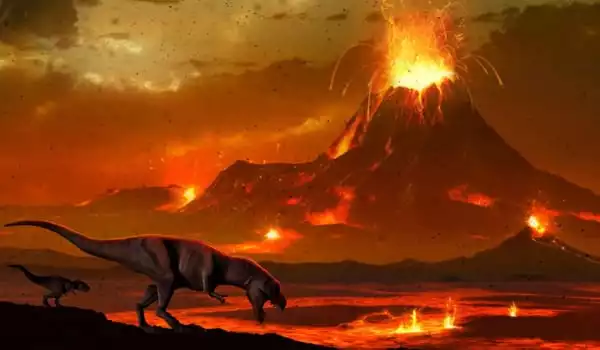Volcanoes can have an impact on climate change. Massive amounts of volcanic gas, aerosol droplets, and ash are injected into the stratosphere during major explosive eruptions. Injected ash falls rapidly from the stratosphere, and the majority of it is removed within a few days to weeks, having little effect on climate change. However, volcanic gases such as sulfur dioxide have the potential to cause global cooling, whereas volcanic carbon dioxide, a greenhouse gas, has the potential to promote global warming.
Dinosaurs flourished during the Jurassic period after a volcanic eruption roughly 201 million years ago wiped out many marine and land animals, allowing them to evolve and grow. More information about this eruption and the mass extinction is now available. A group of researchers demonstrated how low-temperature magma slowly heated sedimentary rocks, resulting in high sulfur dioxide and low carbon dioxide emissions and cooling the earth.
Researchers from Japan, Sweden, and the United States have discovered evidence that low volcanic temperatures caused the fourth mass extinction, allowing dinosaurs to thrive during the Jurassic period. Large volcanic eruptions cause climatic fluctuations, ushering in evolutionary changes. Yet it is the volcanic temperature of the eruption that determines whether the climate cools or warms.
We believe the extinction was caused by large volcanic eruptions because the benzo[e]pyrene + benzo[ghi]perylene + coronene anomaly was only observed around the time of the mass extinctions.
Professor Kunio Kaiho
Five mass extinctions have occurred since the emergence of early animals. The fourth mass extinction occurred near the end of the Triassic Period, 201 million years ago. Many marine and land animals became extinct as a result of this mass extinction, particularly large-bodied, crocodilian-line reptiles known as pseudosuchia. Approximately 60-70 percent of animal species have become extinct. As a result, small-bodied dinosaurs were able to thrive.
Scientists believe the fourth mass extinction was caused by eruptions in the Central Atlantic Magmatic Province, one of the world’s largest volcanic rock regions. However, the relationship between the eruption and the mass extinction has yet to be determined.

Kunio Kaiho, current professor emeritus at Tohoku University, and his team demonstrated how low temperature magma slowly heated sedimentary rocks, resulting in high sulfur dioxide (SO2) and low carbon dioxide emissions, using analysis of sedimentary organic molecules and a heating experiment (CO2).
The SO2 gas was dispersed throughout the stratosphere, eventually converting to sulfuric acid aerosols. The sudden increase in global albedo resulted in short-term cooling, which may have contributed to the mass extinction.
Kaiho and his colleagues analyzed organic molecules and mercury (Hg) in marine sedimentary rock samples from Austria and the United Kingdom. Four distinct benzo[e]pyrene + benzo[ghi]perylene + coronene -Hg enrichments were discovered.
The discovery of low coronene in the first enrichment was especially eye-opening. Coronene concentrations were high during the second, third, and fifth mass extinctions. A low concentration indicates that low temperature heating resulted in a large amount of SO2 release and global cooling.
“We believe the extinction was caused by large volcanic eruptions because the benzo[e]pyrene + benzo[ghi]perylene + coronene anomaly was only observed around the time of the mass extinctions,” Kaiho explained.
Carbon dioxide (CO2) is a greenhouse gas that is primarily responsible for climate change. While sulfur dioxide released in recent volcanic eruptions has occasionally resulted in detectable global cooling of the lower atmosphere, carbon dioxide released in recent volcanic eruptions has never resulted in detectable global warming of the atmosphere.
The conversion of sulfur dioxide to sulfuric acid, which condenses rapidly in the stratosphere to form fine sulfate aerosols, has the greatest climate impact from volcanic injections into the stratosphere. The aerosols increase the reflection of solar radiation back into space, which cools the Earth’s lower atmosphere, or troposphere. Kaiho’s team is now looking into other mass extinctions in the hopes of learning more about the causes and processes that led to them.





